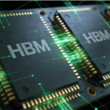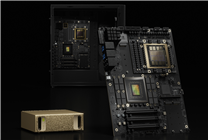NVIDIA’s Project DIGITS: The Future of AI Supercomputing
Summary:
- NVIDIA has unveiled Project DIGITS, claiming the title of the world’s smallest AI supercomputer featuring the innovative GB10 super chip.
- The GB10 boasts impressive technical specifications, including a 20-core ARM CPU and advanced GPU capabilities, suitable for running large AI models.
- Despite high anticipation, the release of the GB10 has faced multiple delays, raising concerns about its technical challenges.
On October 8, it was reported that NVIDIA introduced Project DIGITS during the CES show in January, positioning it as the world’s smallest AI supercomputer powered by the cutting-edge GB10 super chip. This innovative technology is designed to meet the rising demands of AI computing.
Features of the GB10 Super Chip
The GB10 is engineered to deliver exceptional performance, equipped with a 20-core ARM architecture CPU that combines ten Cortex-X925 cores with ten Cortex-A725 cores. This robust design is complemented by a GPU built on the Blackwell architecture. Notably, the GB10’s FP4 performance reaches a remarkable 1PFLOPS, integrating fifth-generation Tensor cores alongside fourth-generation RT light tracing cores. These specifications are comparable to the performance of the RTX 5070, demonstrating the chip’s high capability in processing complex algorithms.
Memory serves as a crucial element in the GB10’s architecture. It utilizes a 256-bit LPDDR5X unified memory, achieving a maximum frequency of 9,400 MHz and an impressive raw bandwidth of approximately 301GB/s. The system supports up to 128GB of memory, allowing it to operate large AI models containing up to 200 billion parameters, as well as fine-tuned models with parameters reaching up to 70 billion.
Pricing and Availability
Given its high-performance specifications, the GB10 comes with a considerable price tag. Previous pre-sale information indicated a starting cost of 30,000 yuan for the 128GB + 1TB version, while the 128GB + 4TB variant begins at 40,000 yuan. This premium pricing reflects the advanced technology embedded within the product.
NVIDIA collaborated with MediaTek on the development of the GB10, which has been referenced by both names—GB10 and N1. MediaTek previously indicated plans for mass production in autumn; however, the launch timeline has faced several setbacks.
Delays and Technical Challenges
Originally slated for release in May, the GB10’s launch date was postponed to July, with hopes for pre-sale availability in September. As of mid-October, the status on the official website still indicates that it is awaiting notification, signifying a prolonged delay that has raised eyebrows in the tech community. The ongoing delays imply underlying technical issues, as it appears that certain bugs are preventing timely shipments.
The Competitive Landscape
NVIDIA’s re-entry into the high-performance PC market marks a significant milestone, but the current competition with established giants AMD and Intel poses challenges. While NVIDIA possesses strong GPU technology, MediaTek’s expertise has primarily centered around mobile CPUs, suggesting a need for further development within the high-performance sector.
The ongoing delays in the GB10 launch may also provide insight into NVIDIA’s strategic decision to invest $5 billion into Intel. The ambition behind this partnership aims to develop a super SoC chip, integrating Intel’s CPU capabilities with NVIDIA’s renowned RTX GPU technology, indicating a potential shift in the competitive landscape.
Conclusion
NVIDIA’s Project DIGITS and the GB10 super chip exemplify the company’s commitment to advancing AI computing technology. While its potential is undeniable, the current delays highlight the complexities involved in bringing groundbreaking technology to market. As the situation develops, both consumers and industry experts will be keenly observing the release timeline and performance of the GB10.
This article sheds light on the significant advancements in AI technology and the competitive dynamics shaping this rapidly evolving market. By keeping an eye on these developments, stakeholders can better navigate the future of AI computing.









